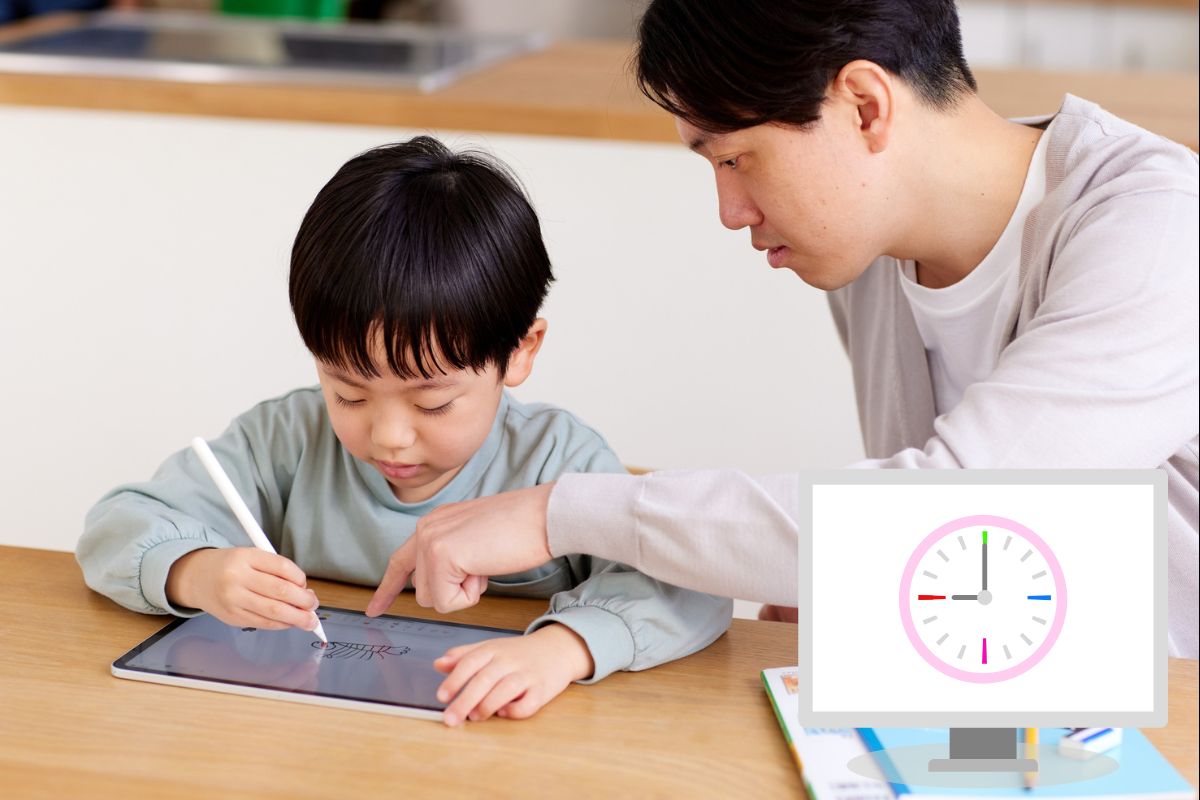Understanding the concept of time can be challenging for children. Grasping phrases like “one hour” or “five more minutes” isn’t as simple as counting numbers.
Learning about different time formats, such as the 24-hour clock, can also enhance their comprehension. This is where interactive clock tools come in—an effective way to make learning about time easier, more fun, and more engaging for kids.
Quick Overview:
- Clearer understanding of time – Interactive clocks support visual and hands-on learning.
- Increased engagement – Using interactive methods makes learning more exciting.
- Faster mastery of time measurement – Real-time interaction speeds up comprehension.
- Easier teaching for parents and teachers – Provides a more effective way to explain time to children.
Why Is Teaching Time Important for Kids?
The ability to read and understand time is a crucial life skill. From an early age, it helps shape discipline, planning, and responsibility. For instance, when kids know mealtime, bedtime, or playtime, they develop better daily routines.
For preschoolers and early elementary students, understanding time can initially be difficult. Traditional wall clocks can seem complicated with multiple numbers and hands moving at different speeds. This is where interactive clock tools become invaluable.
How Do Interactive Clock Tools Help?
Interactive clocks are designed to make the concept of time more visual and tangible. Instead of merely explaining time with words, children can physically move the clock hands and observe real-time effects.
This hands-on approach helps them connect abstract time concepts with real-world experiences, making learning more effective. It also encourages independent exploration, allowing children to develop a natural curiosity about time and how it functions.
Better Understanding of Time Relationships
When children can manually rotate the clock hands, they better understand the connection between the hour and minute hands and how they work together to change the time.
This interaction allows them to recognize patterns, such as how the minute hand completes a full rotation while the hour hand moves to the next number.
By repeatedly adjusting the clock, they become more confident in differentiating hours and minutes, leading to improved accuracy in telling time.
Easier Learning of Time Reading
Interactive tools simplify teaching time without overwhelming kids. Some digital tools visually display time changes as the clock hands are moved.
This immediate feedback helps children grasp time increments faster, reinforcing how hours and minutes correlate.
By engaging with these tools frequently, children can transition from reading digital clocks to confidently interpreting analog clocks, an essential skill for real-life time management.
Stronger Knowledge Retention
Studies show that children learn better through multisensory approaches—engaging their sight, hearing, and movement simultaneously. With interactive clock tools, they don’t just listen; they actively participate in the learning process.
This interactive learning environment enhances long-term memory retention, making it easier for children to recall time concepts even when they are not using the clock tool.
Moreover, the ability to physically manipulate the hands of the clock reinforces their understanding through trial and error, which strengthens cognitive connections related to time awareness.
How to Use Interactive Clock Tools Effectively
There are various ways to maximize the effectiveness of interactive clocks in teaching time.
Using Colors to Differentiate Hours and Minutes
Some interactive clocks use different colors for hours and minutes, making it easier for children to distinguish their functions. This visual distinction helps them quickly identify the hour and minute hands without confusion.
Bright, contrasting colors engage children and make the learning process more enjoyable. Over time, this method helps children build confidence in reading clocks independently.
Engaging Time-Telling Activities
Make learning fun by turning time-telling into a game. For example, in the “What Time Is It?” game, a teacher or parent calls out a time, and the child adjusts the clock to match.
Other interactive activities include setting a timer and asking children to predict when a specific amount of time has passed. These activities encourage active participation and reinforce time concepts in an engaging way.
Utilizing Digital Interactive Tools
Beyond physical clocks, apps and online games can help teach time. These digital tools use animations to demonstrate how clocks function in real life.
Some apps allow children to manipulate virtual clock hands and receive instant feedback, reinforcing their learning. Additionally, interactive quizzes and puzzles within these apps keep children engaged while improving their time-telling accuracy.
How This Helps in a Child’s Daily Life
Once children understand time, their daily routines become easier. They know when it’s time for meals, classes, or bedtime. They also develop a sense of responsibility, such as completing homework before a deadline or getting ready for school on time.
In school, understanding time helps children follow schedules effortlessly. They won’t be confused about when recess, lunch, or dismissal happens, as they have a clearer grasp of time management.
The Role of Parents and Teachers in Teaching Time
Parents and teachers play a vital role in developing children’s time awareness. Instead of relying solely on traditional teaching methods, interactive approaches make learning more engaging.
For parents, simple questions like, “What time is it now?” or “What will we do in 30 minutes?” help integrate time awareness into daily conversations.
For teachers, hands-on classroom activities using interactive clocks can be highly effective. For instance, children can use mini clocks to set the time for their morning routines or school schedules.
Making Time Learning Fun and Effective
Teaching time doesn’t have to be difficult. With interactive clock tools, learning becomes more engaging and effective. This method not only speeds up comprehension but also helps children appreciate the importance of time in daily life. With the right tools and guidance, mastering this essential skill becomes an enjoyable and valuable experience that lasts a lifetime.
